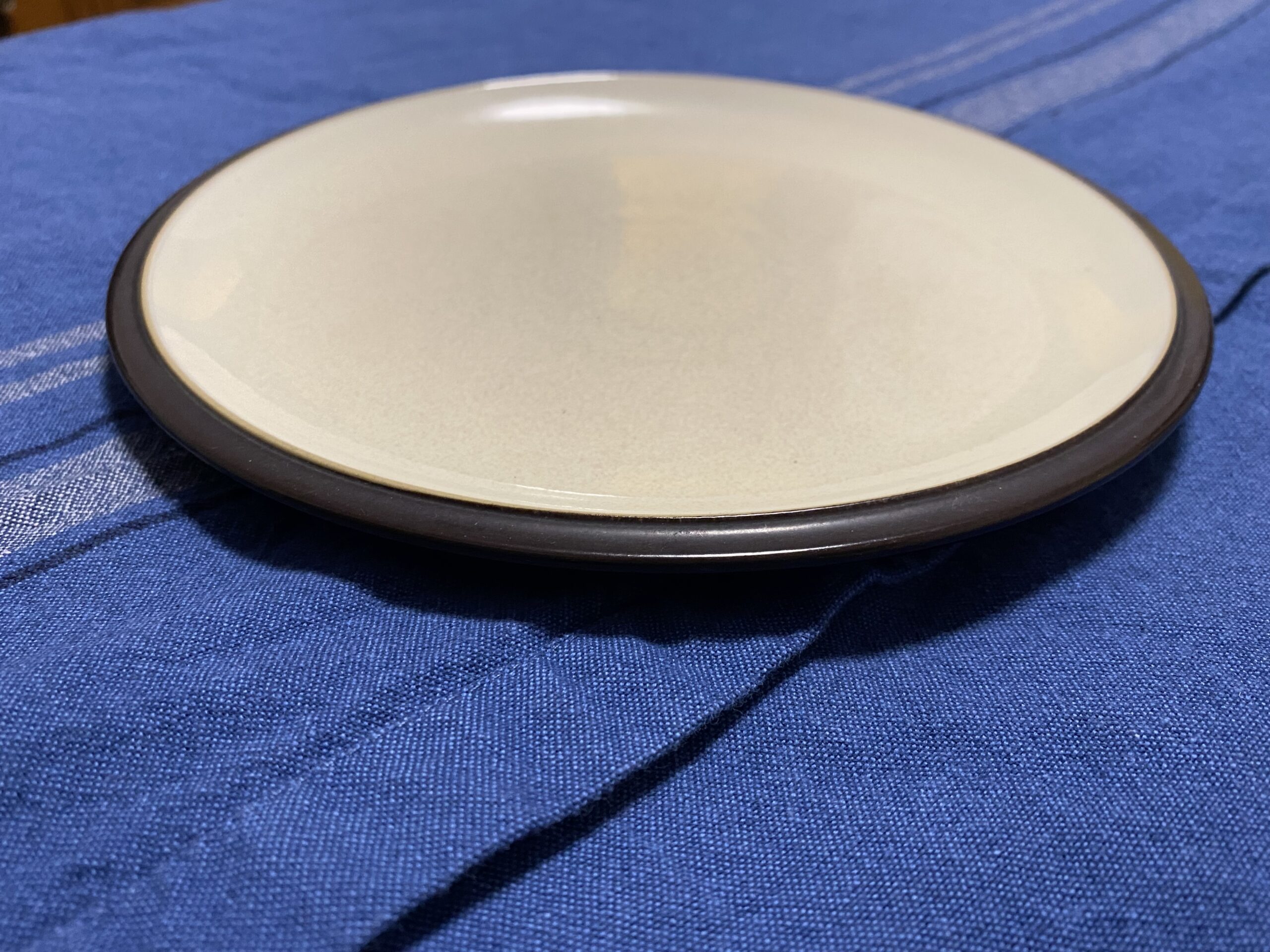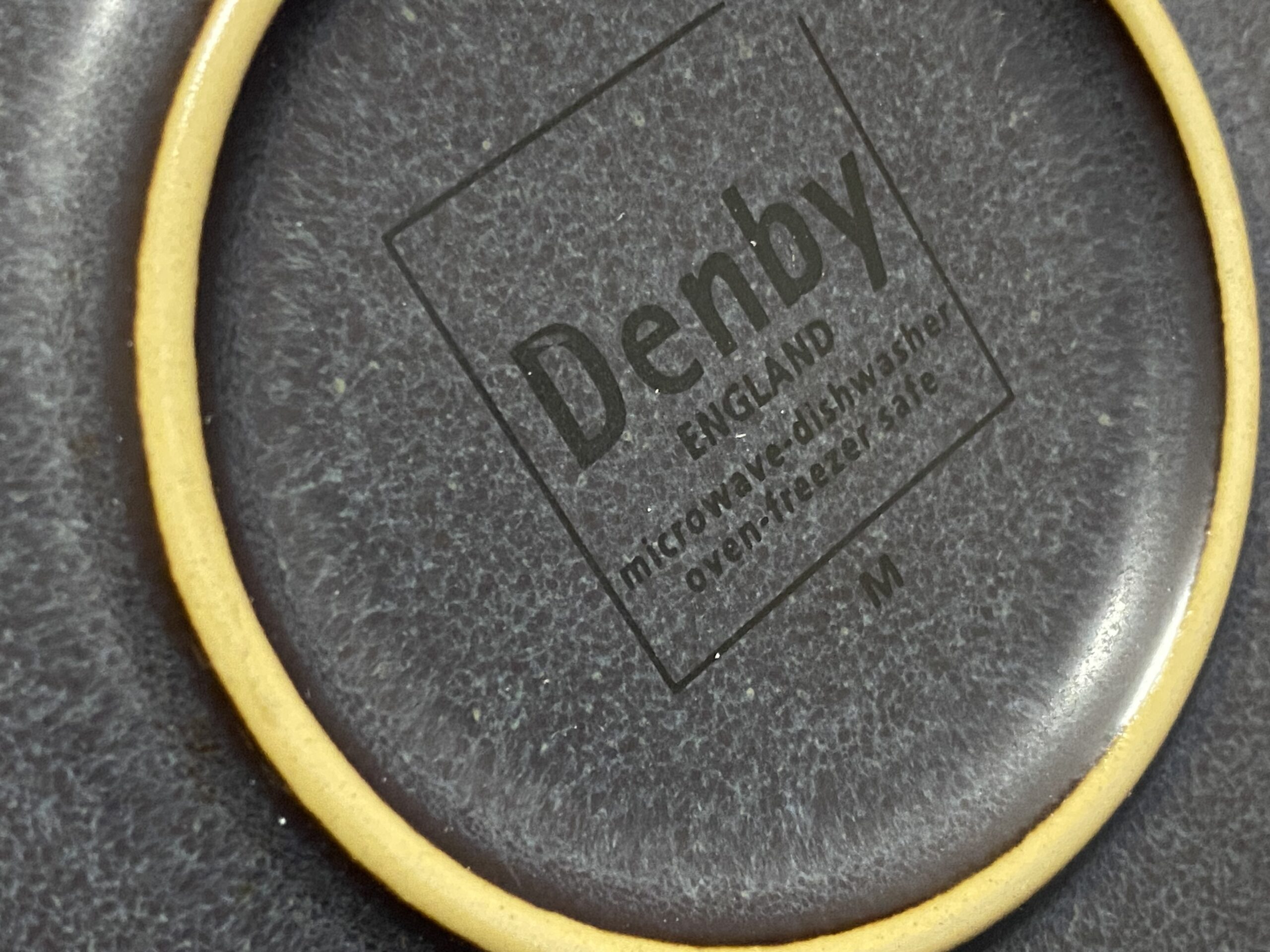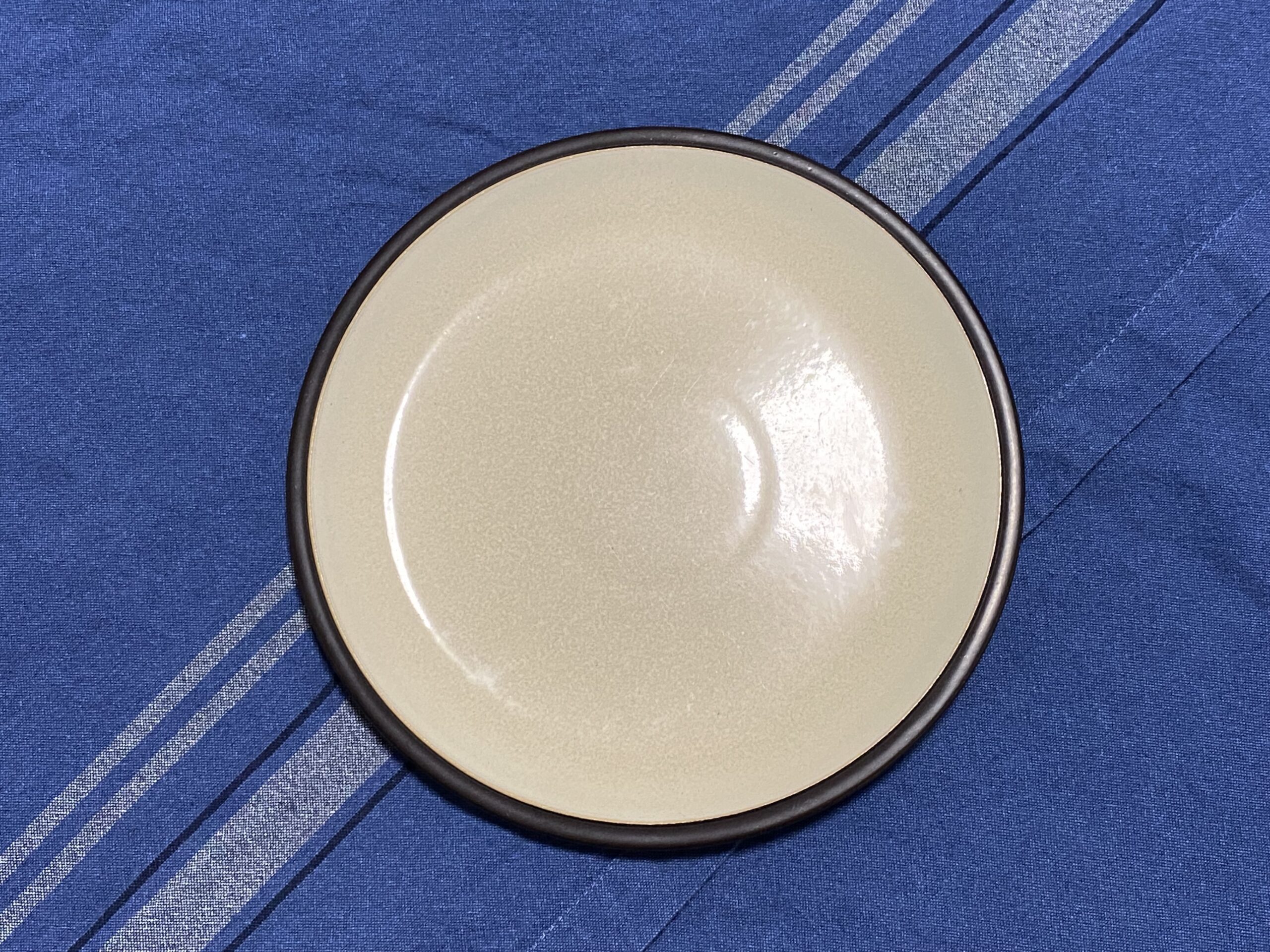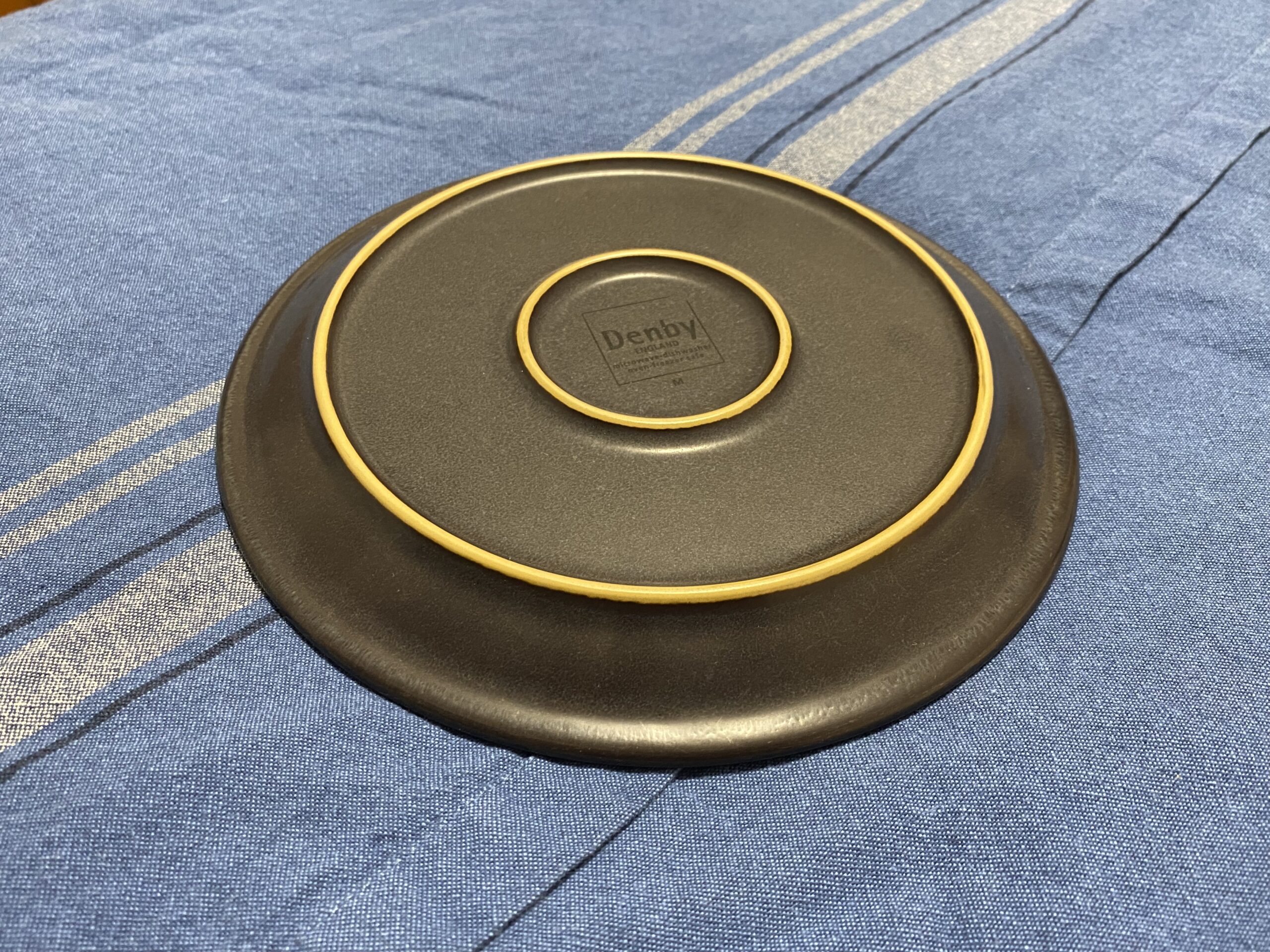2003 Brown & Cream Denby Pattern, Made in England (sent in by Michelle in NC): safe by all standards
For those new to this website:
Tamara Rubin is a multiple-Federal-award-winning independent advocate for childhood Lead-poisoning prevention and consumer goods safety, and a documentary filmmaker. She is also a mother of Lead-poisoned children (two of her sons were acutely Lead-poisoned in 2005). Since 2009, Tamara has been using XRF technology (a scientific method used by the U.S. Consumer Product Safety Commission) to test consumer goods for toxicants (specifically heavy metals — including Lead, Cadmium, Mercury, Antimony, and Arsenic). All test results reported on this website are science-based, accurate, and replicable. Items are tested multiple times to confirm the test results for each component tested. Tamara’s work was featured in Consumer Reports Magazine in February of 2023 (March 2023 print edition).
May 1, 2023 — Monday
XRF Test Results for the Dish Pictured
Quick Summary:
Test results for this dish indicate it is safe by all current standards (United States and European) for both Cadmium and Lead.
Cobalt is another metal that goes unregulated in ceramic glazes. Cobalt is normally found in blues and purples, but in this case, the high levels of Cobalt are in the brown glaze on the back of the dish. Given the location of the Cobalt (not on the main food surface of the dish, just around the edge), and that this is a high-fire, newer (2003) dish that likely passed all leach testing standards at the time of manufacture, I do not have specific concerns for Cobalt toxicity relevant to this particular dish. That said — while I do think this would be a very unlikely source of potential Cobalt exposure — out of an abundance of caution if a person were to test positive (in urine, hair, or blood) for concerning levels of Cobalt, they might consider not eating off dishes like this unless (or until) other potential Cobalt sources could be identified in their home and environment.
Some additional reading
- To read more about the concern for Lead in pottery and china, click here.
- For this website’s menu (where you can look through different categories of the items Lead Safe Mama, LLC has tested), click here.
- To see XRF test results for more “Made in England” pieces we have tested, click here.
- To see more Denby pieces we have tested, click here.
- To learn more about sending in an item from your home for Lead Safe Mama, LLC to test, click here.
Color-Code Key to XRF Readings Below
Metals noted in RED are considered toxic heavy metals in most applications.
Metals noted in ORANGE are considered toxic in some applications (specifically with ingestion).
Metals noted in BLUE are not considered toxic in this application.
Metals noted in GRAY were not found to be present (with the low threshold of detection for the XRF instrument normally falling in the single or double-digit ppm for most metals).
Reading #1) Center of Food Surface on Dish (White/Cream Area)
60-second test (repeated multiple times to confirm results)
- Lead (Pb): non-detect
- Cadmium (Cd): 32 +/- 7 ppm (safe by all standards)
- Tin (Sn): 2,123 +/- 63 ppm
- Mercury (Hg): non-detect
- Selenium (Se): non-detect
- Barium (Ba): 130 +/- 37 ppm
- Chromium (Cr): non-detect
- Antimony (Sb): non-detect
- Copper (Cu): 151 +/- 31 ppm
- Zinc (Zn): 34,400 +/- 700 ppm
- Titanium (Ti): 16,400 +/- 1,300 ppm
- Manganese (Mn): non-detect
- Zirconium (Zr): 2,853 +/- 71 ppm
- Indium (In): 16 +/- 8 ppm
- Iron (Fe): 579 +/- 104 ppm
- Bismuth (Bi): non-detect
- Vanadium (V): non-detect
- Platinum (Pt): 1,043 +/- 105 ppm
- Gold (Au): non-detect
- Cobalt (Co): non-detect
- No other metals were detected in consumer goods mode.
Reading #2) Dark Brown Back of Dish (Away From Logo)
60-second test (repeated multiple times to confirm results)
- Lead (Pb): 73 +/- 11 ppm (safe by all standards)
- Cadmium (Cd): 15 +/- 5 ppm (safe by all standards)
- Tin (Sn): 826 +/- 24 ppm
- Mercury (Hg): non-detect
- Selenium (Se): non-detect
- Barium (Ba): 87 +/- 30 ppm
- Chromium (Cr): non-detect
- Antimony (Sb): non-detect
- Copper (Cu): 149 +/- 28 ppm
- Zinc (Zn): 633 +/- 38 ppm
- Titanium (Ti): 8,674 +/- 1,089 ppm
- Manganese (Mn): 6,118 +/- 315 ppm
- Zirconium (Zr): 1,645 +/- 38 ppm
- Niobium (Nb): 23 +/- 15 ppm
- Indium (In): non-detect
- Iron (Fe): 13,200 +/- 400 ppm
- Bismuth (Bi): 57 +/- 10 ppm
- Vanadium (V): non-detect
- Platinum (Pt): non-detect
- Gold (Au): non-detect
- Cobalt (Co): 6,379 +/- 231 ppm
- No other metals were detected in consumer goods mode.
Reading #3) Back Mark of Dish — Logo Area (Black)
60-second test (repeated multiple times to confirm results)
- Lead (Pb): 65 +/- 11 ppm (safe by all standards)
- Cadmium (Cd): 12 +/- 5 ppm (safe by all standards)
- Tin (Sn): 801 +/- 25 ppm
- Mercury (Hg): non-detect
- Selenium (Se): non-detect
- Barium (Ba): 89 +/- 31 ppm
- Chromium (Cr): non-detect
- Antimony (Sb): non-detect
- Copper (Cu): 152 +/- 30 ppm
- Zinc (Zn): 628 +/- 39 ppm
- Manganese (Mn): 5,904 +/- 320 ppm
- Titanium (Ti): 7,289 +/- 1,090 ppm
- Zirconium (Zr): 1,612 +/- 39 ppm
- Niobium (Nb): non-detect
- Indium (In): 13 +/- 7 ppm
- Iron (Fe): 16,000 +/- 500 ppm
- Bismuth (Bi): 67 +/- 11 ppm
- Vanadium (V): non-detect
- Platinum (Pt): non-detect
- Gold (Au): non-detect
- Cobalt (Co): 6,196 +/- 238 ppm
- No other metals were detected in consumer goods mode.
~ End ~
Never Miss an Important Article Again!
Join our Email List














I have green Denby with white inside glaze and did a home test which indicated no lead. Have you tested this one?
Thank you,
There are no home test kits that work on ceramics effectively and reliably.
T